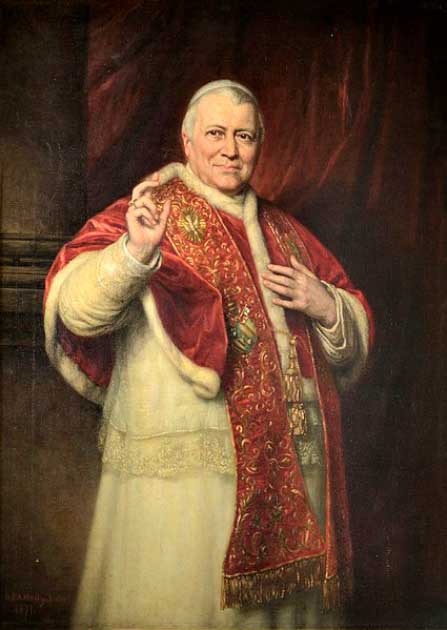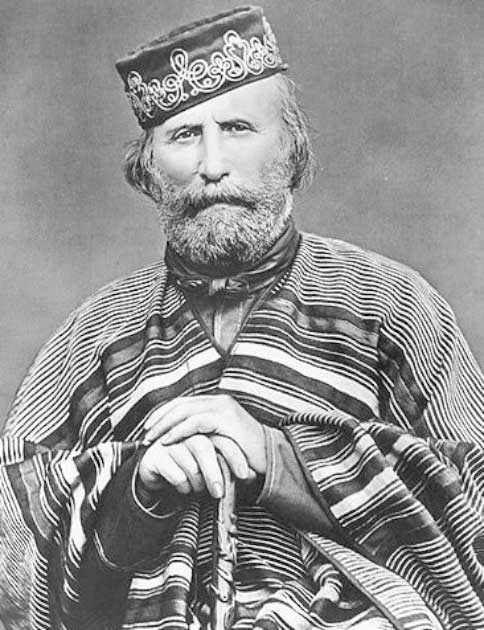Italy as a country is a relatively new concept, and while the schoolbooks will tell you that unification occurred in 1861 this belies the messy nature of this creation of a modern state. Much was fought over and the Papacy, which had sought to stand apart, was drawn into conflict in the peninsula once again.
Throughout, one man claimed to be a “prisoner of the Vatican”. In September 1870, revolutionary troops broke through the walls of Rome and claimed the city as part of the new state of Italy. Pope Pius refused to accept it and declared that he was a prisoner of the Vatican.
He denounced the “usurper” state as he called it and retreated into the fortress of the Vatican City. Pope Pius refused the newly formed government’s entreaties and declined to come out of the complex.
This is hard to picture, as since the mid-20th century the Vatican and Italy have been strongly linked. Tourists travel from around the world to visit the Vatican and thus have to travel through Italy.
Italy has been known as a Catholic country with a special bond to the pope. Popes have lived in the Vatican for thousands of years but were clearly divided in this intersection of history.
The Origins of Italy
The creation of Italy as a kingdom only happened in the 19th century. Before this, it had been a conglomerate of powerful city-states. The kingdom was created as a result of efforts from Italian nationalists and those people who supported the House of Savoy in their efforts to establish a united kingdom on the Italian Peninsula.
In 1848, European countries faced a series of upheavals in what became known as the “springtime of nations”. It was and still is the most widespread wave of revolutionary activity in history.

In Italy, this movement was led by the revolutionary Giuseppe Garibaldi. He was based in the south of the Italian Peninsula while the drive for unification in the North was led by the House of Savoy, its head already a king in Sardinia.
Through the government of Camillo Benso, Sardinia was a well-established state and had a more significant Italian population than many others. It had been vital in liberating Lombardy from Austrian rule earlier in the century. Additionally, it had also established foreign support through the United Kingdom and France.
- The Pope and Mussolini: The Secret Unholy Alliance
- The Avignon Captivity: Why did the Pope move to France?
The city states valued their independence and there were many efforts were imposed to stop Garibaldi from unifying Italy, including by organizing revolts in the Papal States. These uprisings were promptly used as a casus belli to invade the territories, much to the chagrin of the Roman Catholics. The Pope, Pius IX, only managed to remain in control of a few territories surrounding Rome.
The forces in the north and the came to an agreement in 1860. This was to allow those states led by Garibaldi to be accepted into those territories ruled by the House of Savoy and by Sardinia.
In 1861, the Parliament declared that Italy had been created. King Victor Emmanuel II of Sardinia was pronounced king of Italy. This was the first king to use the title since Napoleon in 1814.
Unfortunately, troubles did not end there. Tensions between republicans and royalists began to erupt in April of 1861. Garibaldi challenged the leadership of the monarchy and of the Prime Minister, Cavour.
Garibaldi claimed that Italy was being divided under the monarchy and that the ensuing political instability would lead to civil war. Before too much bloodshed occurred, Cavour died but this did not stop the revolutionary mood from erupting. Garibaldi was arrested in 1862 and was infamous around the world for controversy.
In 1866, Victor Emmanuel II agreed on a treaty with Prussia in which Italy gained the Venetian lagoon and the surrounding region of Veneto. This sparked, however, a Third Italian War of Independence against Austria.

The Italians fared poorly in this conflict but still managed to annex Veneto thanks to the Prussian progress elsewhere. With Veneto secured, there was only one thing stopping Italian Unification and that was Rome.
In 1870, Prussia went to war with France. Because of this, France had to abandon their position in Rome which had protected the Papal States and Pius IX. This left the door open for Italy to become unified.
The Kingdom of Italy managed to muster its forces and after several battles and guerrilla tactics, Rome was finally taken.
A Prisoner?
Rome’s capture by the Italian forces ended the power of the Holy See in central Italy that had lasted for over a millennium. Rome was made the new capital of Italy.
- The Etruscans: Who Lived in Italy before the Romans?
- Papal Resignation and Papal Murder: Popes Celestine V and Boniface VIII
However, the Italians did not occupy Vatican Hill. Pope Pius IX refused to accept this control and refused to accept the rule of the Italian State. This refusal went from Pope to Pope, lasting 60 years from Pope Pius IX to Pius XI. They all described themselves as prisoners of the Italian State.
Nationalism swept across the Italian Peninsula in the 19th century, but it was blocked by the Papal States. The Papal States under the control of the Pope managed to hold off previous invasions but when the Italian troops broke through it was a sign that their power was waning.
The Italian government apparently was going to let Pius keep the part of Rome West of the Tiber, named Leonine City. Pius IX refused.

After a week the Italians had taken Rome, and the people who lived in Rome voted to join Italy. However, the Pope’s refusal continued for the next 59 years. Every Pope refused to leave the Vatican and avoided any appearance of accepting the authority of the new Italian government.
During this time, Popes would not appear in Saint Peter’s Square or on the balcony of St Peter’s Basilica. They would still give blessings but from a balcony that faced a courtyard. This lasted until the Lateran Treaty with Mussolini in 1929.
In 1871, the Italian Law of Guarantees was passed in an attempt to break the Pope’s resolution. It made the Pope a subject of Italy and not an independent sovereign, but it allowed the Pope to keep certain honors given by the King.
The Pope and his predecessors continued to refuse. It allowed them to continue to stay in the Vatican and not submit to the Italian government. Their response was to excommunicate the King of Italy.
A huge tension was created between the Church and the State. The church would not accept that the Kingdom of Italy was legitimate until the 19th century.
Top Image: Pope Pius IX and his Papal court in the Vatican. Source: Antonio d’Alessandri and Paolo d’Alessandri / Public Domain.
By Kurt Readman